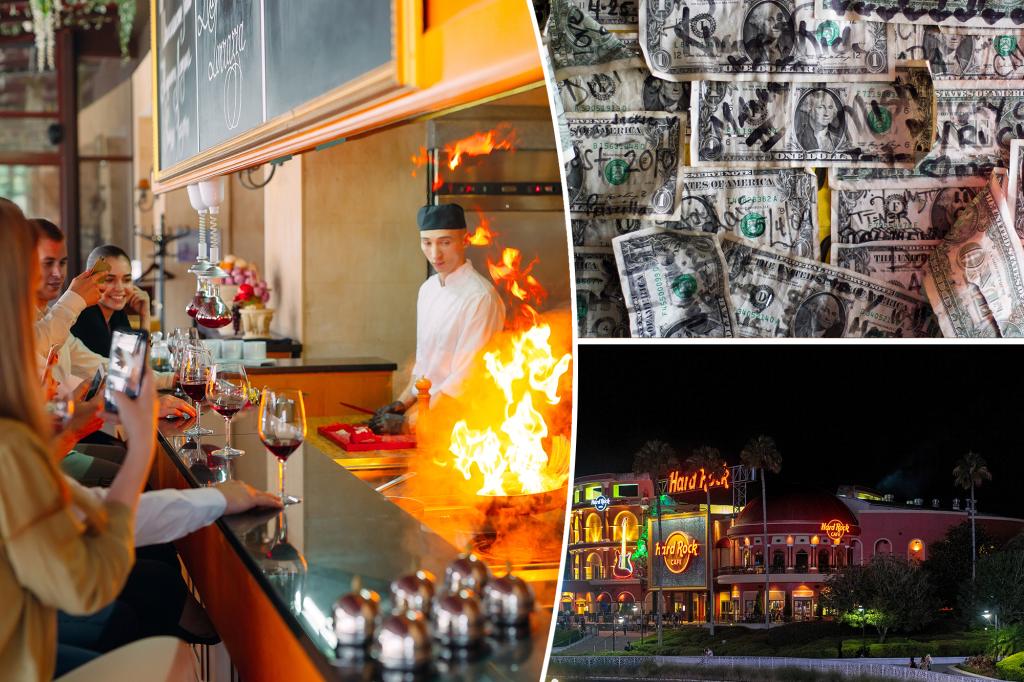Summarize this content to 2000 words in 6 paragraphs
Go ahead and 86 these places from your travel menu.
Even the savviest of jetsetters can be baited into a tourist trap restaurant while on vacation — but it doesn’t have to happen, say experts.
Six vital signs will tell you if an eatery is going to pass the proverbial smell test, the culinary connoisseurs told HuffPo.
Here are the six tips to know to avoid the scams — and instead have a decent meal elsewhere.
Overselling
If an owner or worker is streetside trying to get customers in the door like a businessman desperate to close a deal, you’re looking at a tourist trap, warned Okan Kizilbayir, chef de cuisine at The Ritz-Carlton Amelia Island.
Jared Hucks, chef-owner of The Alden in Atlanta, agrees and added that the bogus beaneries — typically in touristy areas — often have telltale signs they’re not the real deal.
“I avoid any places on the ‘beaten path’ with menus with multiple languages posted in front of the restaurant,” he told Huffington Post.
Bigger doesn’t mean better
Executive pastry chef Claudia Martinez told the outlet she keeps a side-eye open for supersized slop joints in very touristy areas. Specifically, be on the lookout for “larger-scale, over 200-seat operations, usually in downtowns.”
“I want to make sure my money is being spent on people who work hard to put out their local cuisine — not mass-market corporations or tourist traps that purchase food that’s already made.”
A Cheesecake Factory style menu
An oversized amount of offerings that cater to just about every culinary style is another major warning, according to publicity pro Taryn Scher.
She told the Huffington Post to lookout for offerings from “generic, anywhere, USA” like burgers — rather than more imaginative, locally driven menu items.
Scher surmised that dollar bills on the wall are another no-no.
A half baked dessert menu
It might be in your best interest to flip towards the back of the menu before even sitting down, experts advise.
Martinez stressed that “classic cheesecake, molten lava cake, key lime pie … these aren’t usually made in-house.” Ice cream, too, is a sign that your after-dinner delight is being outsourced.
“If there are desserts on display or on the menu with pictures, or outside signage of the desserts, especially in a restaurant that seats over 200 people, it usually means they’re supplied by commercial bakers,” she told the outlet.
Gift shops
If you’re first greeted with merchandise like at the Hard Rock Cafe rather than a host or hostess, chances are your actual meal isn’t the main event, according to Kizilbayir. He also warned to be wary of the Instagram crowd as well.
“People have a cue to take pictures and the restaurant is showcasing more merchandise than what they should sell, which is good food,” he told Huff Post.
It’s too crowded
Overwhelming crowds do not necessarily promise a restaurant’s greatness, Kizilbayir added. Instead, it’s often a sign that trickery’s afoot.
“It’s the circle of life: Tourists come to the city. They show the historic places, museums, gardens. They start to get hungry. Then, the tour guide takes a busload of tourists to a place that looks attractive,” he said.
“Tourists leave these places with bad food in their stomachs, but the tour guide gets a cut of the profits. It’s an easy turn.”
Kizilbayir added that it is travesty how so many places sell their souls to satisfy the masses.
“You cannot deliver good quality food for that many people at the same time, so as a restaurateur, you have to cut corners,” he said.
“You make the food or drinks look ‘bombastic.’ You bring desserts with sparkly candles, play loud ‘popular music,’ have servers sing in weird outfits or hats.”


